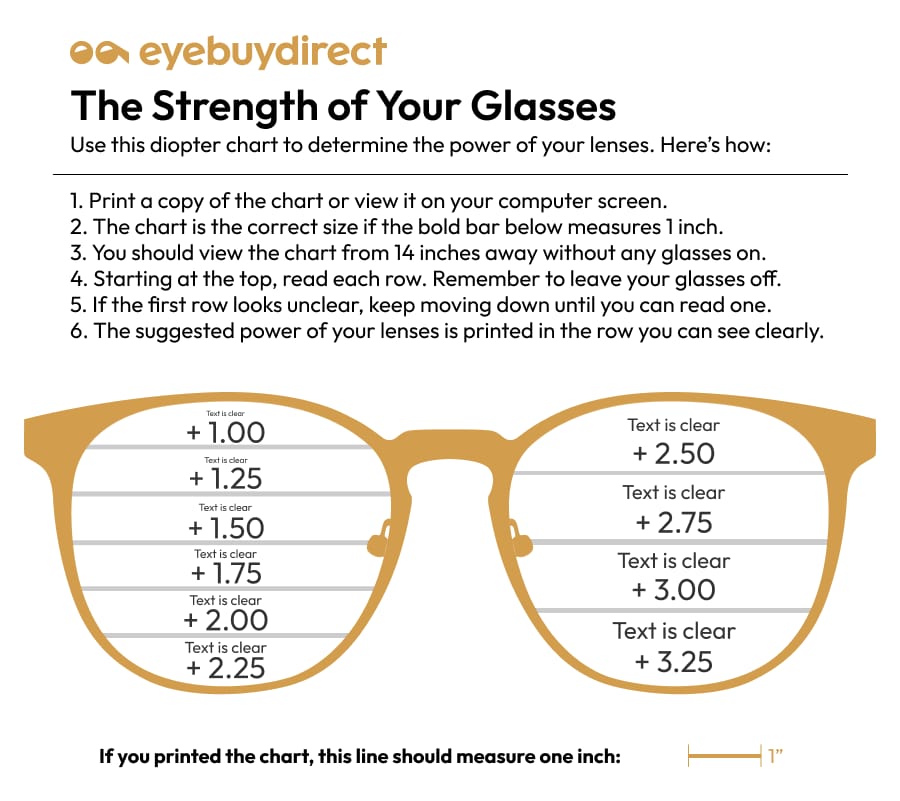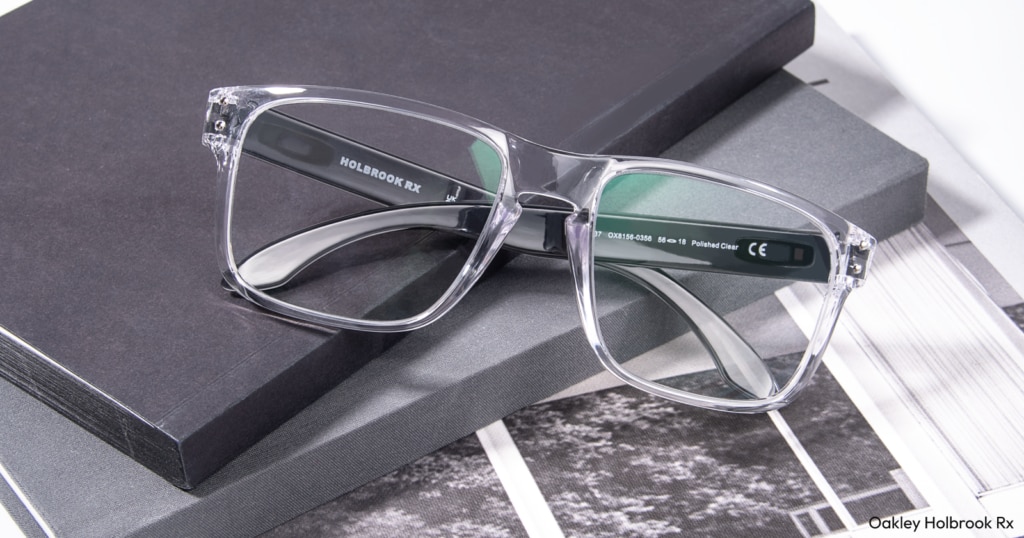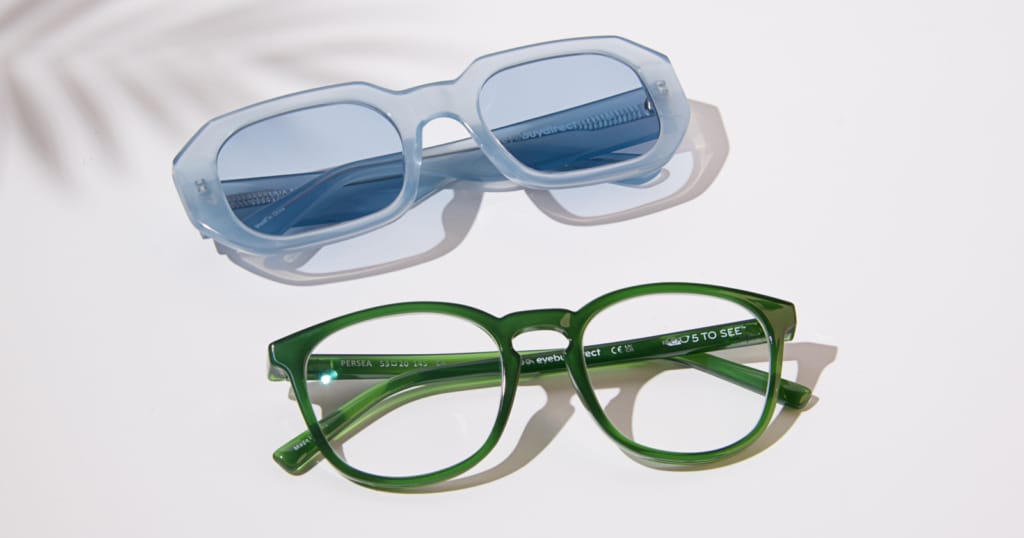Reviewed by Thomas Stokkermans, OD, PhD on June 23, 2023
At some point as you get older, you will probably need a little help reading smaller text. Age-related changes within your eyes can make it difficult to focus on small print and nearby objects. Reading glasses and reading sunglasses can improve near vision, and are available in a range of prescription powers.
After an eye exam, your eye doctor will give you a prescription with all the information you’ll need to buy the correct reading glasses. These numbers and symbols listed on a glasses prescription might be a little confusing, so we’ll break down what everything means below.
Why You Might Need Reading Glasses
Starting around age 40, most people begin experiencing a vision condition called presbyopia. Presbyopia affects a person’s close-up vision, which can interfere with near tasks like reading and writing. Slowly losing the ability to focus up close can be scary for many. And for people who rely on near vision for their livelihoods, like tailors and accountants, it can be detrimental.
Presbyopia is caused by the natural aging of the eye’s crystalline lens. Like a camera, the crystalline lens of the eye adjusts to focus on objects at every distance. As you age, the lens stiffens and isn’t able to adjust as well as it used to — particularly in regard to focusing up close. This causes near vision to appear blurry, especially if you’re trying to read fine print or focus in a poorly lit environment.
Reading glasses help correct presbyopia by focusing the eye on the near focal point and sharpening its details. Everyone’s eyes are different and at varying stages of presbyopia, so there are many benefits of using reading glasses.
Why the Correct Reading Glasses Strength Is Important
If you’re new to reading glasses, seeing all the lens power options may feel a little overwhelming. But before you pick just any pair of readers, you should find the correct lens power for your particular vision needs.
Using a lens power that’s too weak or too strong can cause things to continue looking out of focus. This can lead to eye strain (sore, tired eyes) and headaches. Ultimately, having reading glasses with the wrong lens power will make you feel less inclined to use them, which won’t help you see better. You should have reading glasses that fit you well enough that you want to wear them.

Understanding Your Reading Glasses Lens Power
A reading glasses prescription looks nearly the same as a standard eyeglasses prescription. However, reading glasses prescriptions will always have a sphere (SPH) number, or lens power, with a plus symbol (+). This indicates that the lenses will improve your eyes’ focusing power for close-up objects.
The numbers after the plus symbol are measurements (called diopters) that show how much corrective strength is in the lens. Drugstore reading glasses usually range from +1.00 D to +3.50 D, increasing in increments of +0.25 D.
While this isn’t a bad option, you may be able to get a more precise fit by starting at +0.25 D and increasing to a much higher strength when needed.
Eyebuydirect reading glasses lens powers range from +0.25 D to +12.00 D. The strength that will work for you depends on how much correction you need. The higher the number on the prescription, the stronger the lens power and the more vision correction you need.
Different Levels of Lens Power
As mentioned earlier, reading glasses lens powers usually begin at +0.25 D and increase in increments of +0.25 D. Lens powers of +0.25 D and +0.50 D are very low and may be used by people who don’t actually have presbyopia.
Instead, these lower-power readers may be used by people who want a more comfortable and in-focus view of something small that they need to look at for a long period of time. An example of this is someone who makes jewelry or paints figurines and needs a very sharp view of a small object for hours at a time.
By the time someone recognizes a change in their near vision, they’re usually at +0.75 D or higher.
Average Reading Lens Power by Age
While it varies from person to person, these lens powers are common for the following age ranges when reading at a distance of 14 to 16 inches:
- In your 40s – Between +1.00 D and +1.75 D
- In your 50s – Between +1.75 D and +2.25 D
- In your early 60s – Between +2.25 D and +2.50 D
- In your mid- to late 60s – Between +2.50 D and +3.00 D
Once presbyopia begins, it often worsens gradually until you reach your 60s. At this point, presbyopia starts to level out, before it plateaus around age 70.
While rare, it’s possible for someone to need a higher lens power than +3.00 D. Many consider this a high-power prescription. It’s often used by people with medical issues like macular degeneration. Your vision expert will recommend this power for your reading glasses if they find it necessary.
Reading Distance
All the lens power ranges above are based on trying to see at a distance of 14 to 16 inches. A rule of thumb is to add plus power (get a stronger reader) to try to view something closer. To try to see something farther away, you can take away plus power (get a weaker, lower-powered reader).
This is why someone at age 65 may still feel that they do fine with +1.25 D reading glasses when they are on their computer viewing the screen at a 30-inch distance.
These ranges are useful for getting a general idea of what reading glasses prescription will fit you, but the only way to know precisely what strength you need is to get an updated prescription from your eye doctor. Following an eye exam, they will tell you the exact prescription strength you need.
An eye care professional can also provide details like your pupillary distance, which is just as crucial as the sphere (SPH) number of your prescription.
Note: Having nearsightedness or farsightedness will also affect the reading strength you need, making a vision prescription from your eye doctor even more important. More on this later.
How to Find Your Own Reading Glasses Strength
The best way to find your correct reading glasses strength is to see an eye doctor for a proper exam. Your doctor will determine the exact lens strength you need to have your most clear and precise vision. They will also make sure no other correction is needed, such as for distance vision.
Most importantly, your eye doctor will check for signs of eye conditions including cataracts, macular degeneration, and glaucoma.
But if you’d like to find the right reading glasses lens power on your own, you have a few options to help you get the best fit:
Use a Reading Glasses Strength Chart
First, download and print out a chart that measures different reading glasses’ strengths. Without wearing corrective lenses, hold the chart approximately 14 inches away from your face. Read the chart, starting with the tiniest print and working your way through until you reach a line of text that you can read clearly.
For best results, cover one eye while testing your vision, then switch and test the other eye. It’s possible for each eye to have a different prescription.
Test Different Readers in Person
Another way to determine your reading glasses strength is to go to a nearby drugstore (or your preferred reading glasses vendor). Take a book, newspaper, or other reading material with you. Try on different strengths of reading glasses, and try reading the materials you brought with each lens power.
Make sure you hold the material at the distance where you actually plan to read it. For example, if you are planning on using the glasses to view your piano music, then hold it at exactly the distance that you will be sitting from your music notes.
If you have to move the materials farther from your face to see them clearly, the lens power is too low and you need stronger readers. On the other hand, if you’re having to bring the text closer to your face to see it clearly, the lens power is too strong and you need a weaker pair.
By taking the DIY approach to finding reading glasses, you should know it may not be possible to find the perfect match for your vision needs. If this is the case, and you’re not able to see your eye doctor right away, it’s better to get a reading lens power that’s a little too weak rather than one that’s too strong.
Can I Wear My Reading Glasses All the Time?
In short: Yes, you can wear your reading glasses all the time and it won’t hurt your eyes. However, the lenses only help clarify near objects. Reading glasses will not help you see at mid- or long distances, and can actually make it harder to focus on them.
If you find that your reading glasses help you see distant objects better too, or you realize that you need help seeing at other distances besides close-up, see an eye doctor. Unlike readers, glasses that correct for distance vision cannot be bought without a prescription.
If you prefer the convenience of wearing readers all the time, you may want to consider half-rimmed reading glasses. The lenses are narrow (or low) enough that you can use them for reading, then easily peek over them to focus at other distances.
What if I Also Need Vision Correction for Nearsightedness?
If you already wear single-vision glasses to correct nearsightedness (blurry distance vision), you may benefit from a pair of progressive lenses. Progressive lenses are like bifocals, but bifocals have a harsh line that separates the different lens powers. Progressives seamlessly blend the different powers from the top of the lens to the bottom.
Progressive lenses are great for correcting vision at many distances within a single lens. This eliminates the need to switch out glasses for different tasks. While convenient, progressive lenses are often more expensive than reading glasses and usually take a couple of weeks to get used to.
If you can’t seem to find the right lens power with over-the-counter readers, or you’re experiencing vision changes that don’t seem normal, see your eye doctor. They can find the best solution for your vision needs and put you on the path to clear, healthy eyesight.
SOURCES
- Presbyopia. National Eye Institute. September 2020.
- Optical diopters: Lens strength, meaning and more. All About Vision. October 2022.
- How to buy reading glasses. Verywell Health. August 2022.
- How to determine your reading glasses power. All About Vision. Accessed June 2023.
- How do I choose the right strength reading glasses? GoodRx Health. September 2021.




